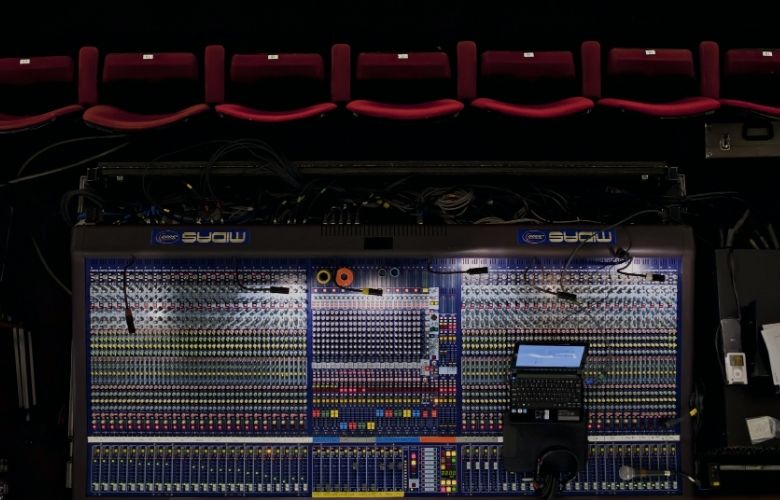
Developments in sound design have evolved greatly since innovations in the recording industry brought new technological possibilities. Here we take a look back at the aural journey of the theatre world.
Live musician and sound effect roles were performed in-person until the 1930s – the decade saw the commercial availability of both music and sound effects on records, which drastically changed things. Mood music to set the tone of a show became widely available, as well as sound effect records that saved performers from having to mechanically create each one. On the downside, finding the exact place in a record with a needle is quite a task, and so this method was not always as reliable and consistent as the old ‘hands-on’ method.
The next notable period of development came in the 1950s when magnetic tape became the main medium for recording sound and music. The period also produced better ways of amplification, which drastically improved the sound, its projection and all-round reliability in the theatre. Magnetic tape was able to be cut and pasted together, which produced many pioneering techniques in the music world, and also meant that for a show an entire production could be spliced together on tape to run through in the correct order with minimal effort for performances – a pre-recorded and edited tape could be played with much more ease.
With these developments, it meant that a sound operator could control the show from one location in the venue, ensuring that effects, volume and the overall mixing of the entire show’s sound could be performed accurately by one person in the ways we traditionally use today.
Technology continued to improve at a rapid rate from the 1950s, with microphones being heavily used in theatres from the 1960s. This was crucial when singers needed to project loud enough to not get ‘drowned out’ by a supporting orchestra in particular, with stage microphones strategically placed at the front of the stage and hung upstage. The real game-changer for microphones came in the 1980s, when wireless radio frequency microphones provided freedom of movement for performers anywhere on stage, and more control for the sound engineer.
With microphones evolving in this way, this meant the possibility of making shows even louder was an option for live shows – microphones could be added to heighten instrumental parts because actors and singers could be amplified even louder with their wireless microphones. This meant that background and incidental music could be incorporated seamlessly as actors’ parts now wouldn’t get lost, bringing even more of an immersive experience to the theatre.
The digital age of the 21st Century has seen sound design come on in leaps and bounds, both for the audience experience, and for the smooth running of shows from a technological point of view. Sound cues generally consist of a great deal of work in the creation and rehearsal period; a sound designer will need to create and edit appropriate sound files, ensuring that they are the correct tone, length and volume to blend with what else is happening on stage and with any music and dialogue that may also be present.
The industry standard for most digital mixing desks in the theatre allows show files and scenes to be pre-programmed and timed, with options of fading in and out to consecutive cues making the flow even more seamless. While these developments may sound like it’s a case of ‘hitting play’ and sitting back for a show, that’s not quite the case.
Rather, the technology is a tool to enable the slickest way of moving from one cue to the next, but there will always need to be a human element of controlling and overseeing the process. On any given night, there will be slight quirks between performances, and so sound technicians and designers will need to be alert, know the timings and dynamics of the show and be prepared to tweak any changes and make adjustments as they happen in real time.
Knowing just how far we’ve come and how intricate live performances are in the present with our current technology, it’s hard not to be excited at the prospect of what the future will hold for theatre sound design – who knows what the next round of technological developments will bring both to how we work, and how we experience live performances in years to come.
Source: Britannica
UK Live Music Scene Has First Outdoor Gig & Plans To Reopen Venues
Alice Smart: Interview with a London based Costume Constructor


Michelle is a musician and composer from the UK. She has performed across the UK and Europe and is passionate about arts education and opportunities for women and girls.
Read Full Profile© 2021 TheatreArtLife. All rights reserved.

Thank you so much for reading, but you have now reached your free article limit for this month.
Our contributors are currently writing more articles for you to enjoy.
To keep reading, all you have to do is become a subscriber and then you can read unlimited articles anytime.
Your investment will help us continue to ignite connections across the globe in live entertainment and build this community for industry professionals.